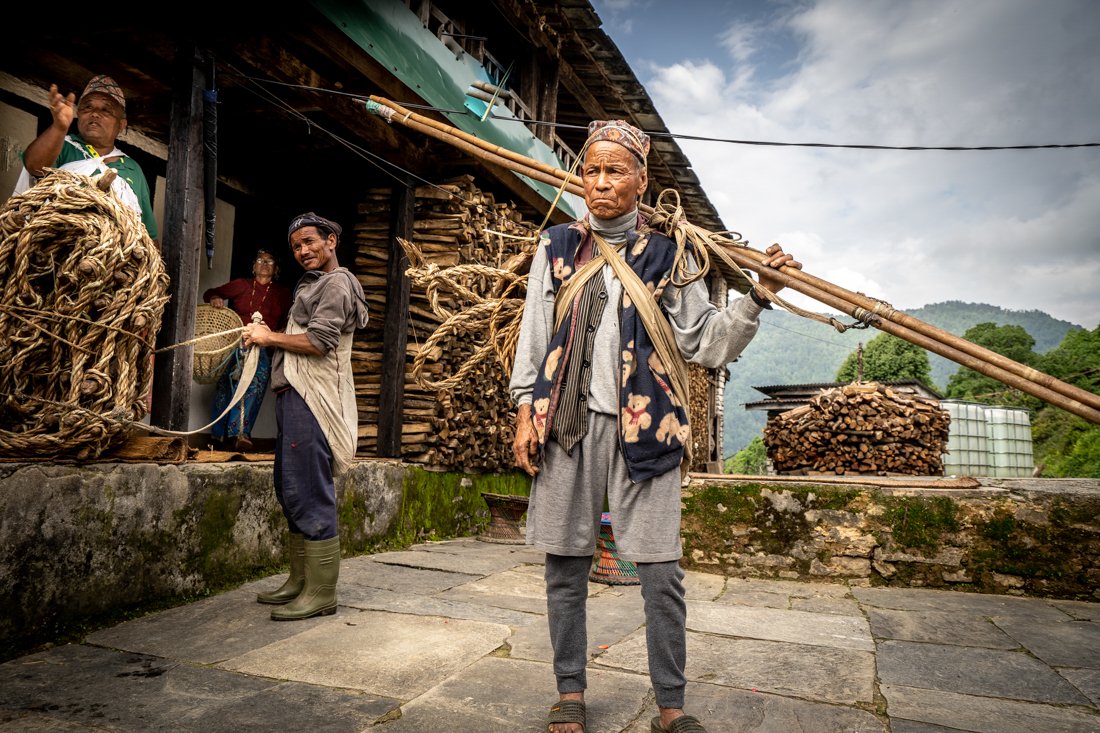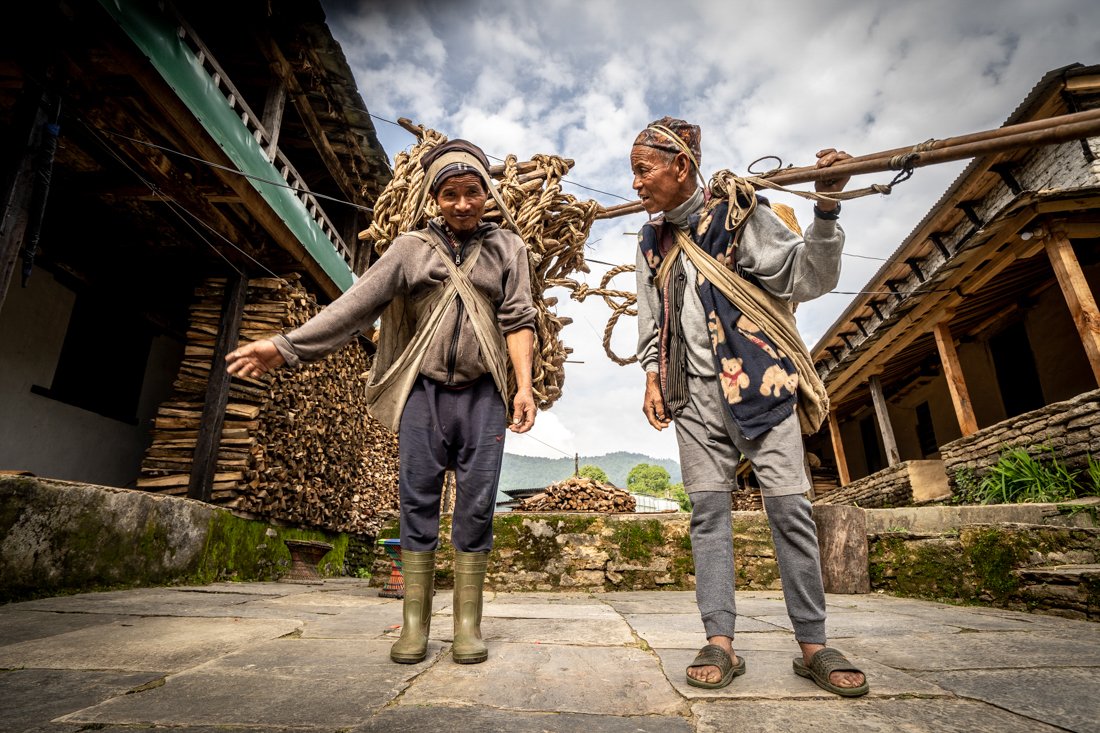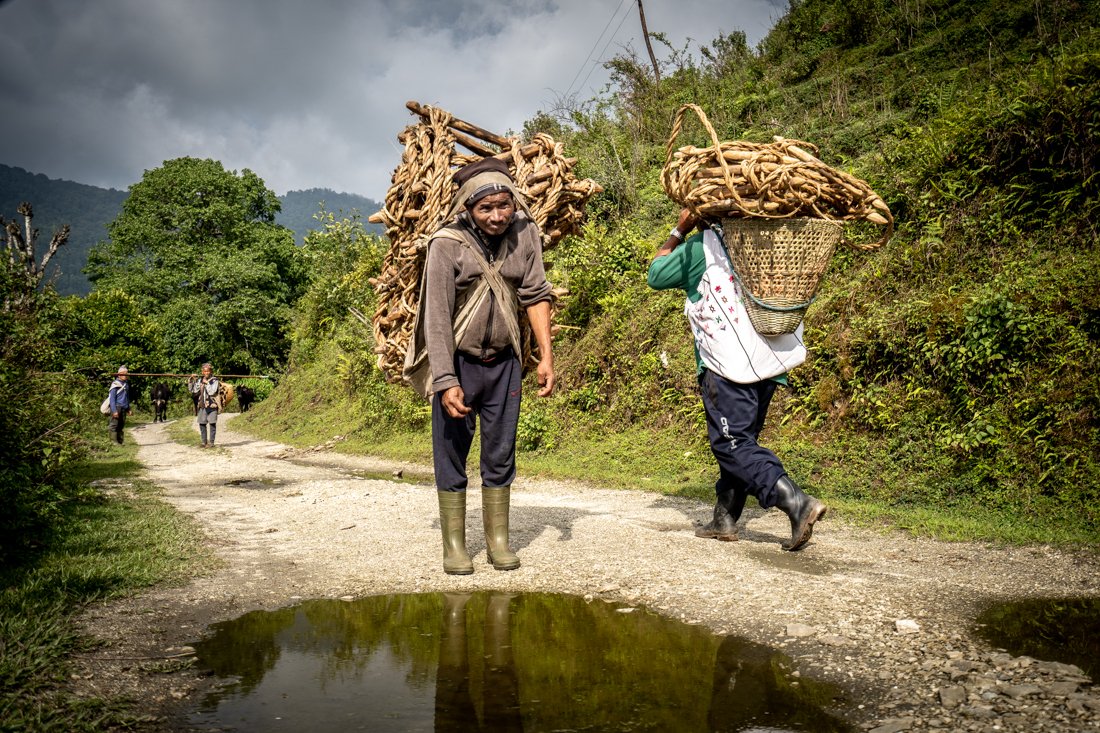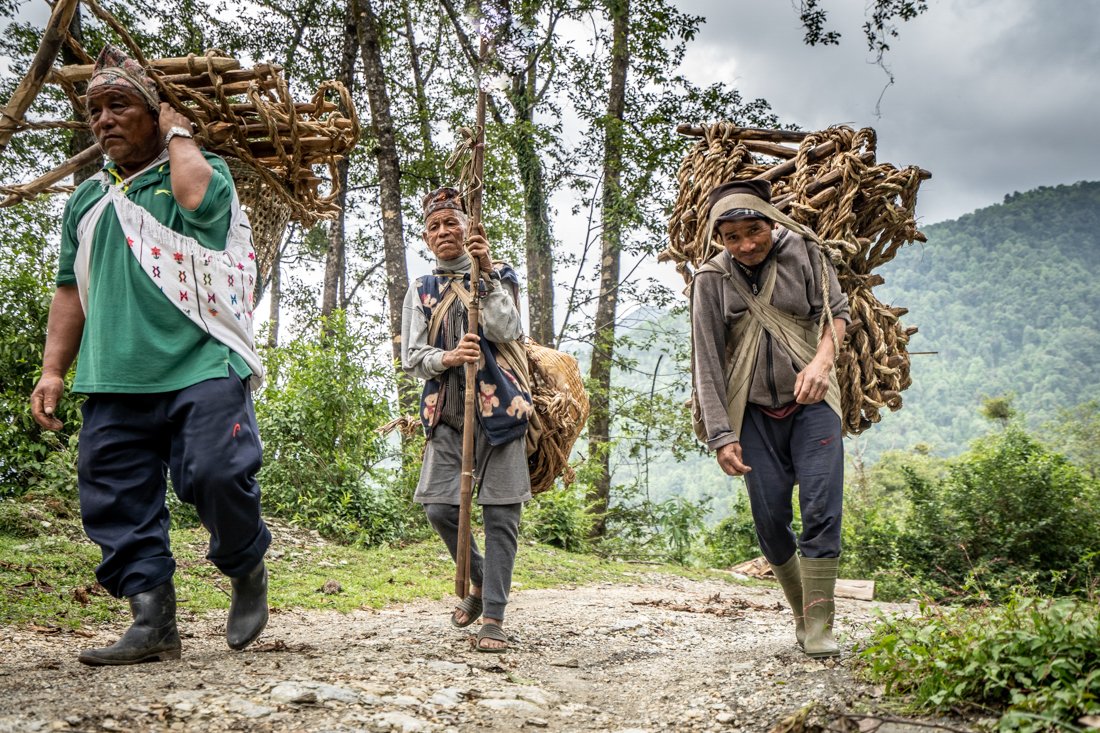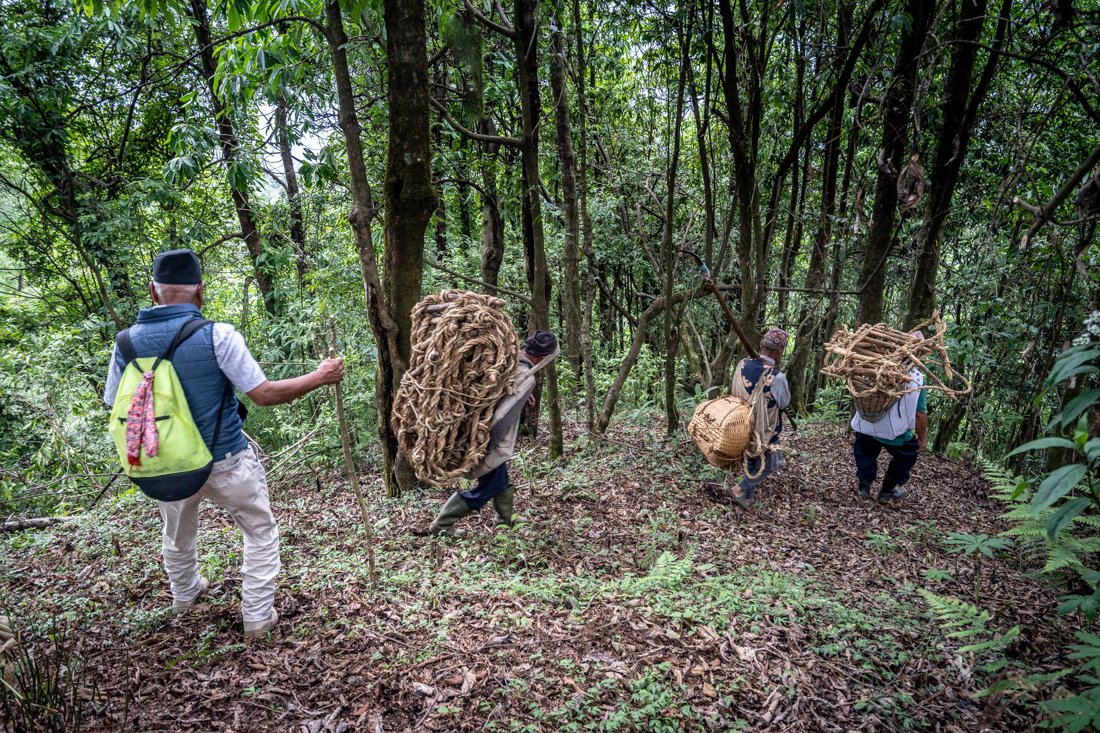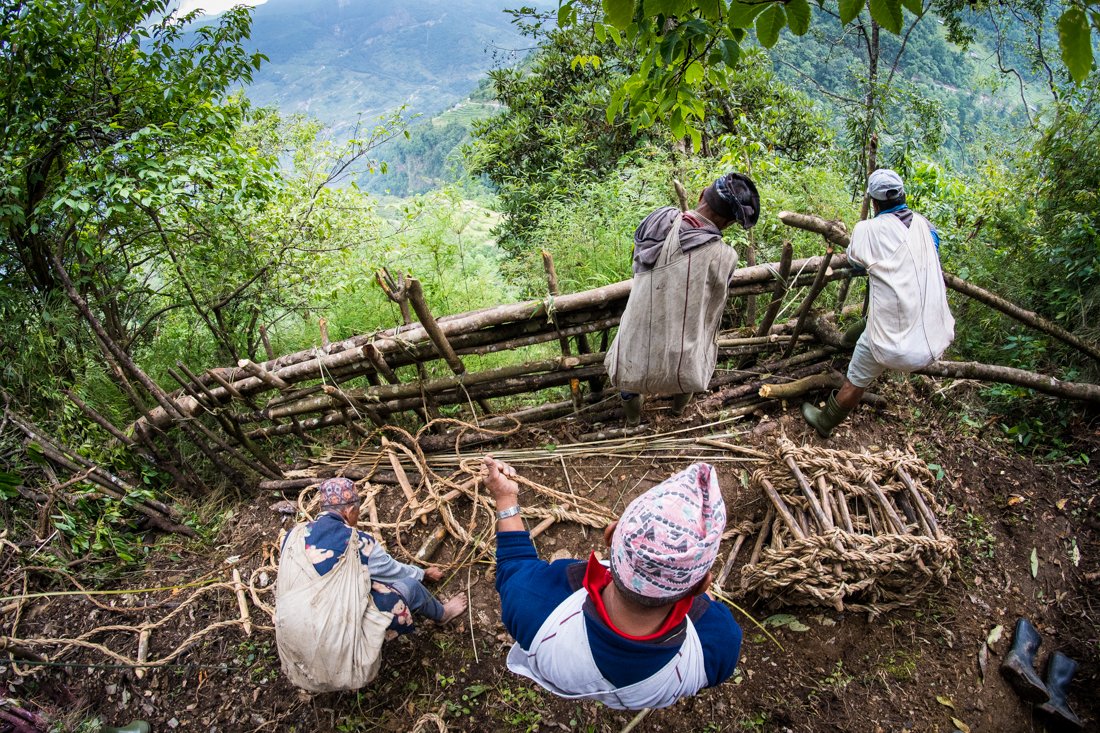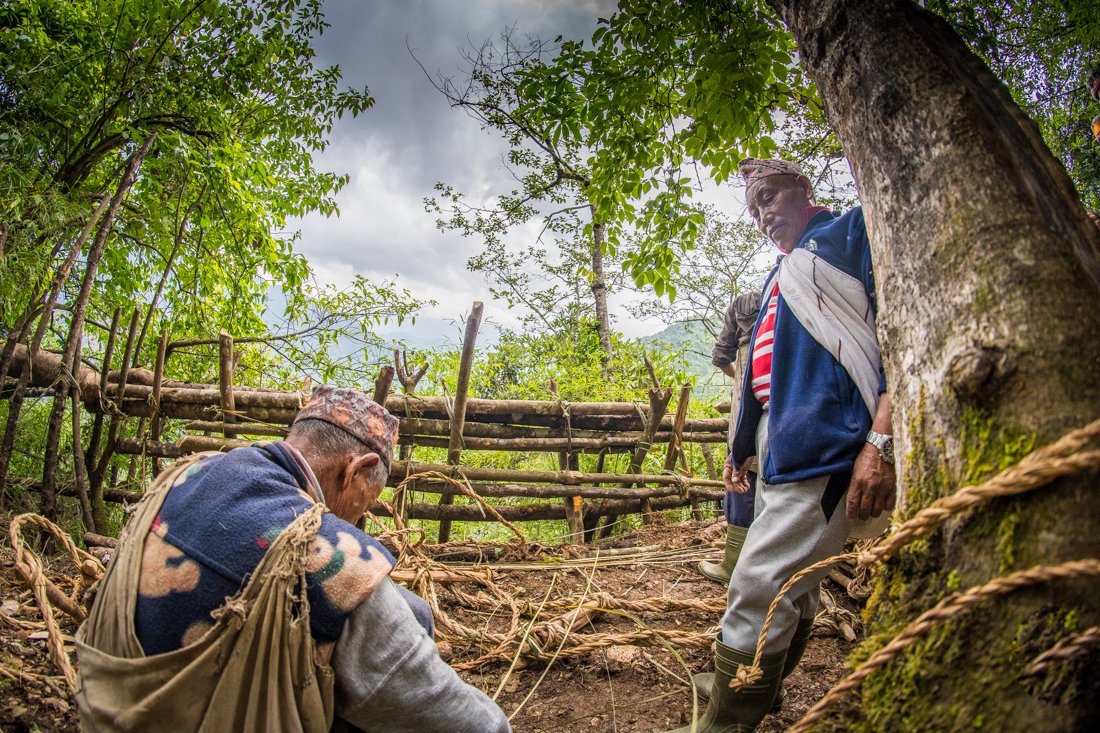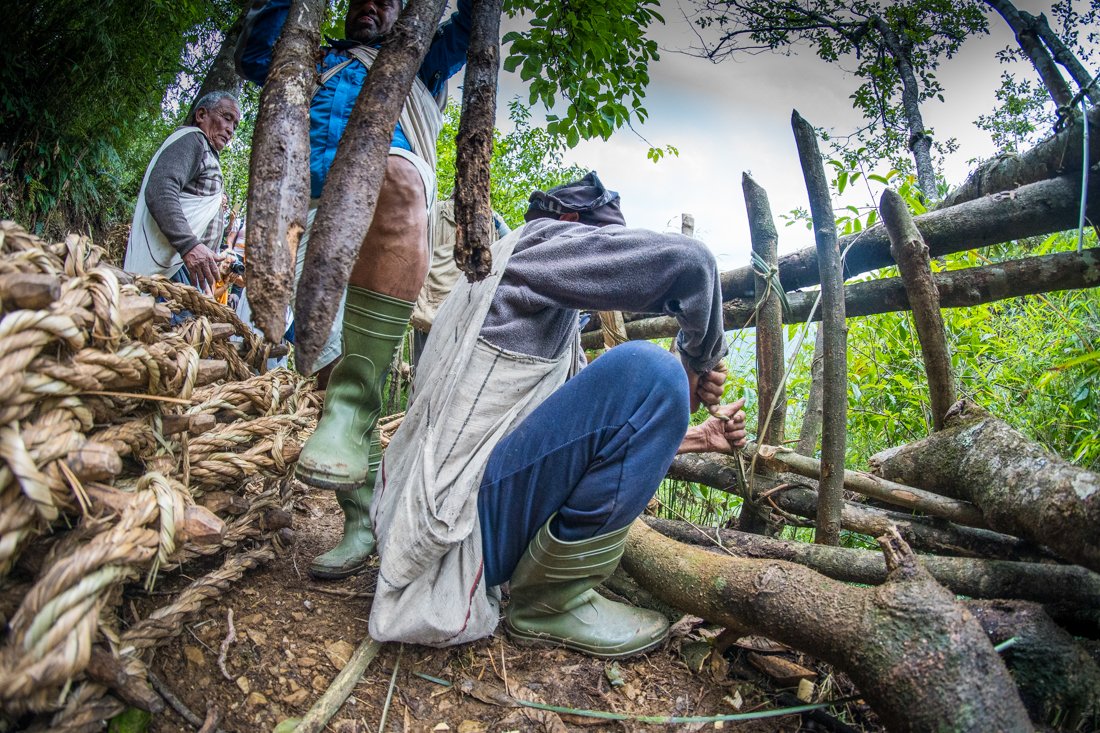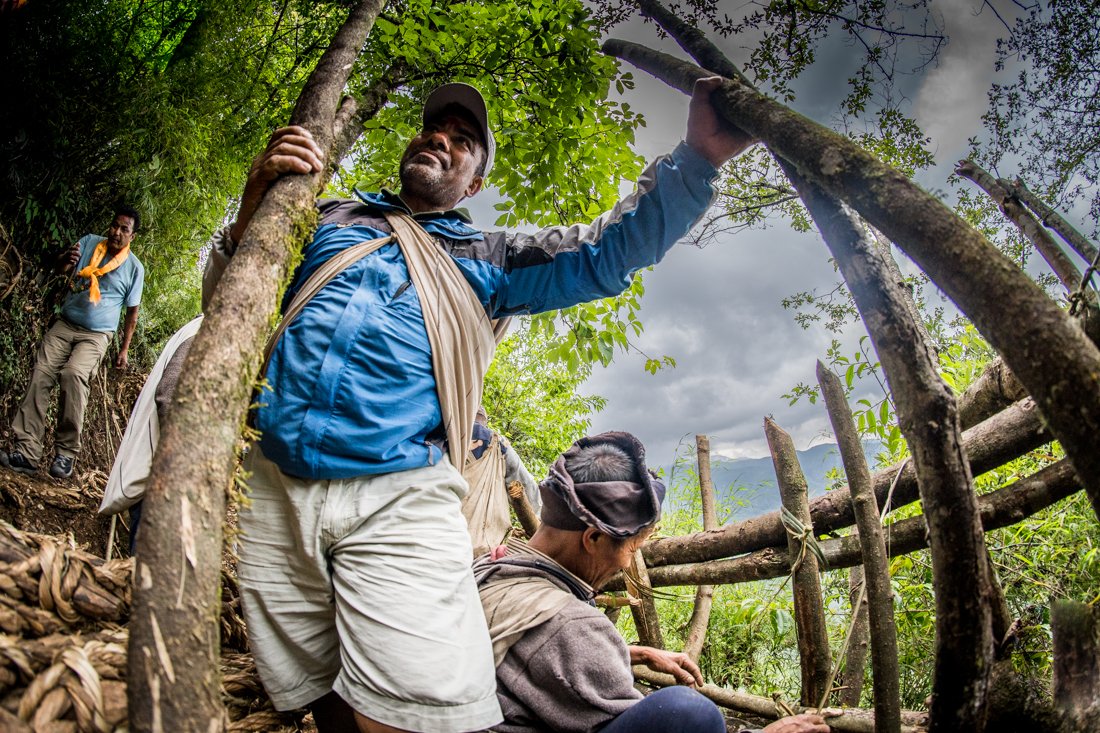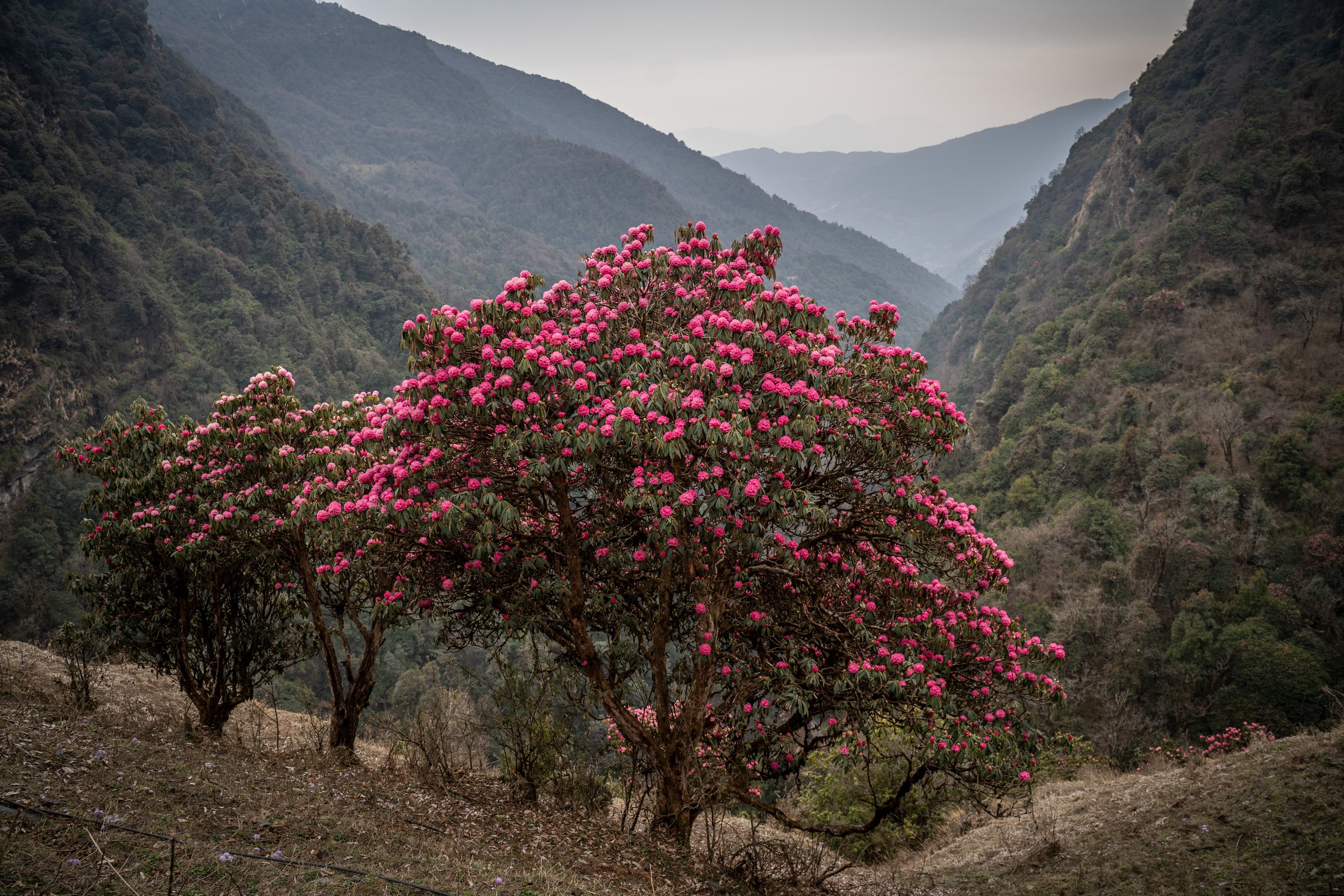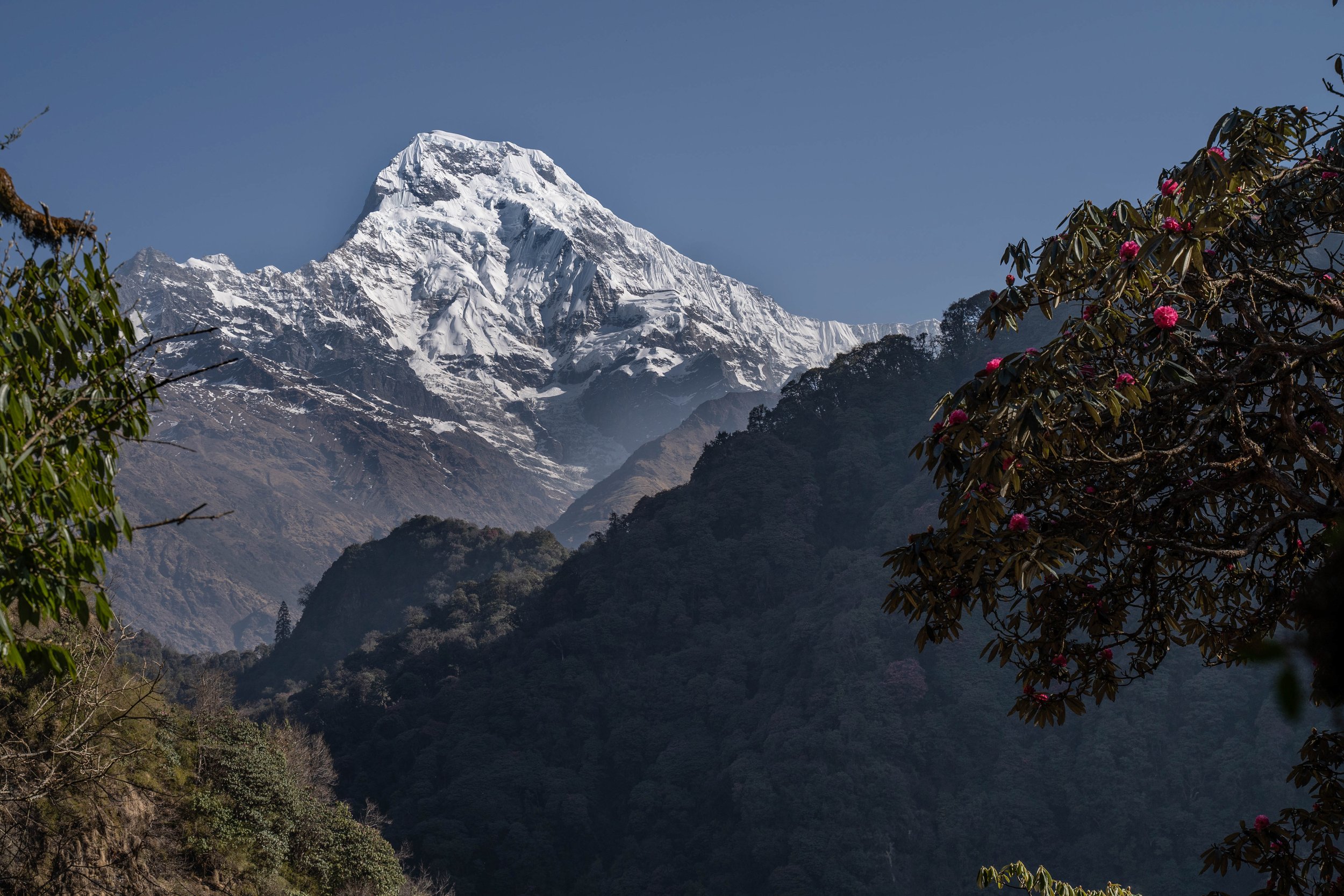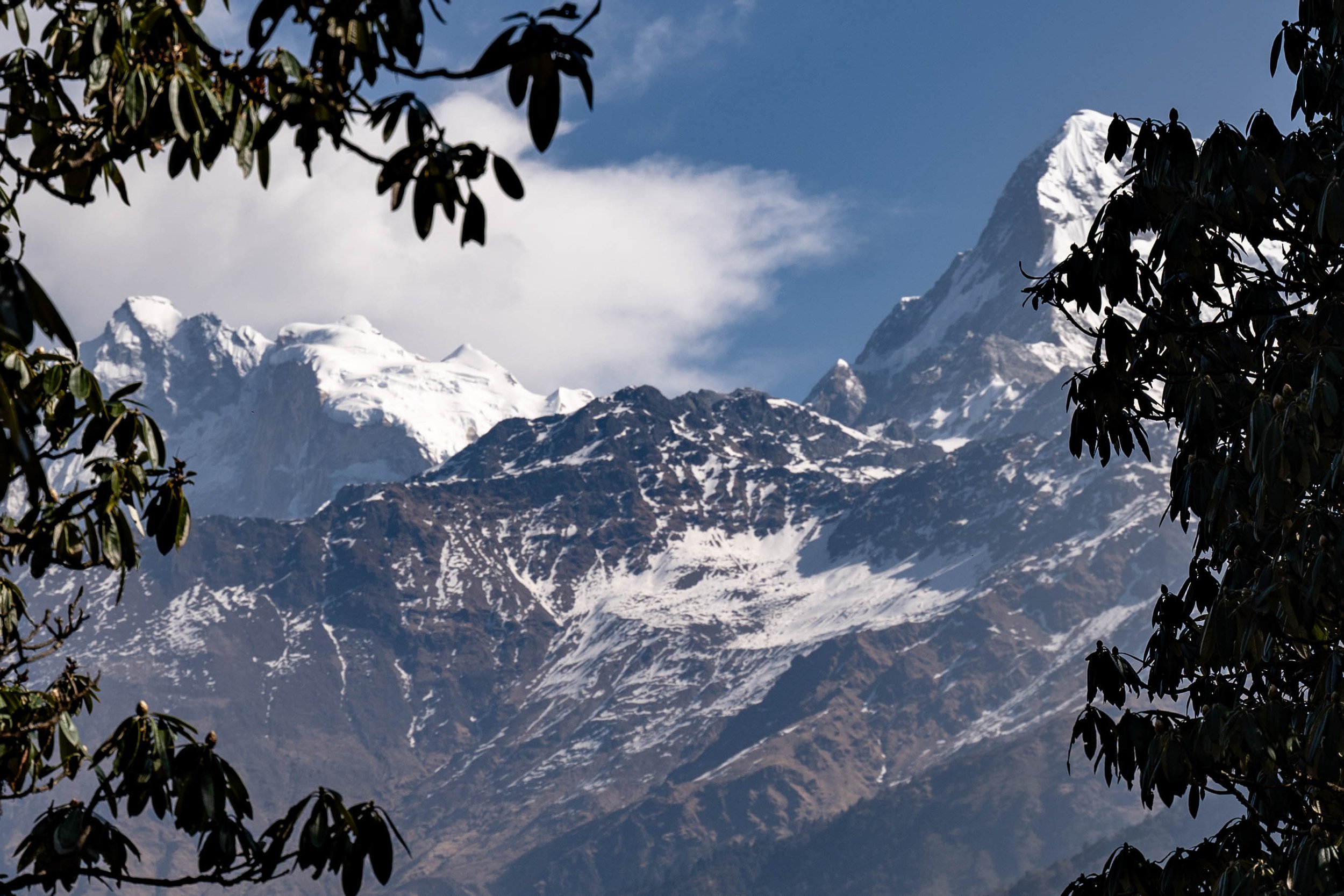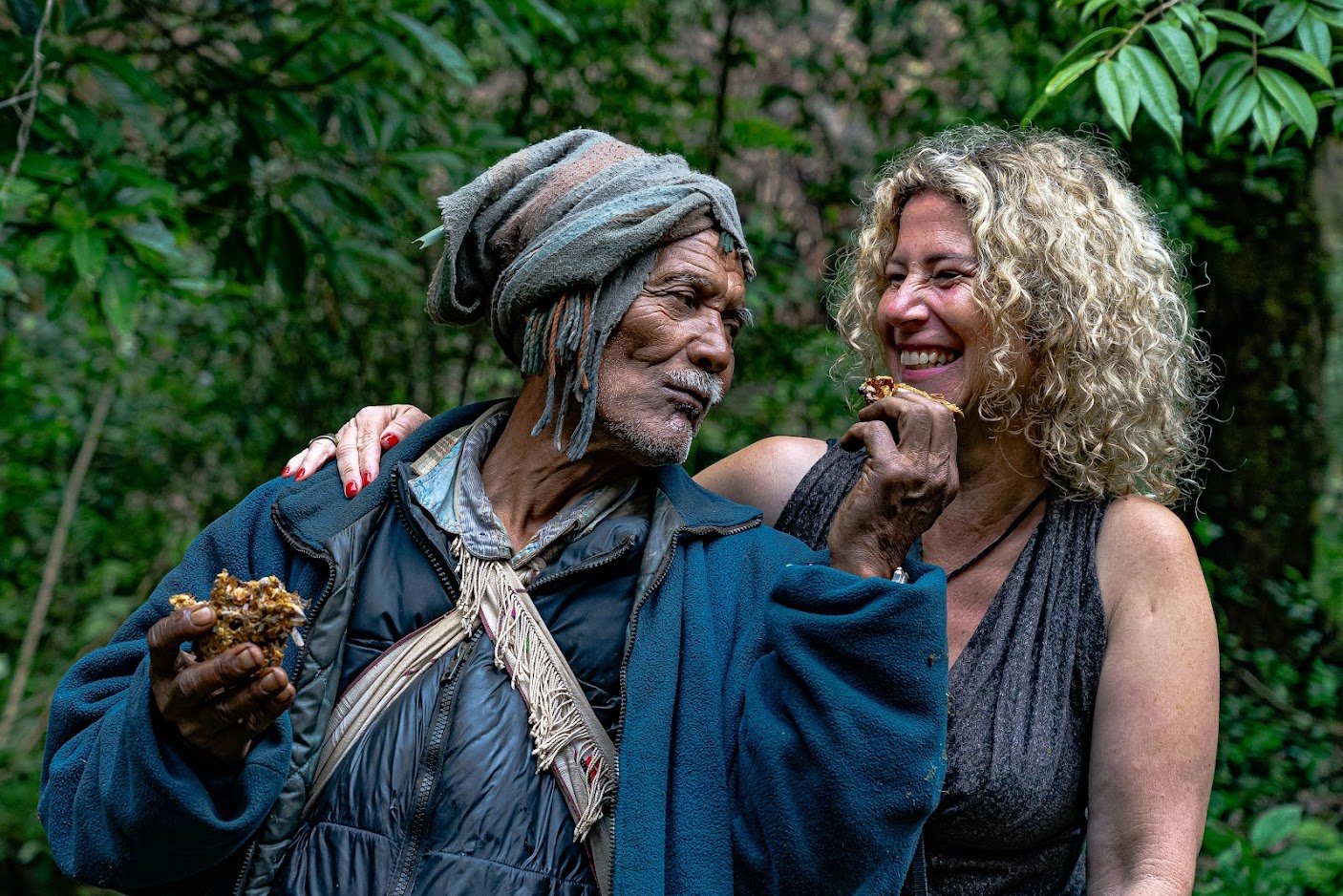LIMOR ZADOK
Following Honey Hunters in the Himalayas in Nepal
For more than 2,000 years, the men of the Gorong and Magar tribes have been dangling themselves with the help of bamboo ladders and ropes, among the largest bee clouds in the world on the cliffs of the Himalayas.
Epicurean bees are four times larger than a normal bee, about the size of a thumb. Their sting stings and hits you. We snatched a few of these, on our journey following the honey hunters in Nepal. There amidst a tumultuous and exciting occurrence of the dreaded bees, the work of honey-spreading continues to take place.
Honey production is considered one of the oldest professions in the world. Only twice a year, in early November and May, do the men of the tribe engaged in dangerous hard labour on hundreds of feet of cliffs. The elders of the tribe remember that in days gone by, the livelihood of the villagers depended on their craft. We accompanied the 71-year-old Naok, who has been doing this for fifty years in a row. He learned the trade from his grandfather and became one of the most sought after and famous honeymooners in the area. "Our young people in the village are turning their backs on us," Naok said, "they are leaving the village. Looking for easier work in the cities. Breaking our lineage and family tradition."
Effortlessly and with a wave of his hand, Naok loaded a key basket on his back, into which he inserted a ladder of seventy meters. Another ladder was loaded on the back of his friend. With his feet light as if hovering in the air he began to tread down a path saturated with puddles, from the torrential rain that had fallen that night.
We followed him to the thicket of the forest, where the road disappeared in favour of muddy surfing on the leaves of fallen leaves. But maybe we should start from the beginning. It was such a morning that we wore tailored clothes for the domestic flight (from Kathmandu to Pokhara), as part of a photo trip to Nepal, which I guided with my travel partners. We buried our hiking boots in a suitcase, wrapped ourselves in multi-layered clothing and additional layers were packed in a backpack.
A day when they intended to get away from the tourist route and climb in jeeps to the cold cliffs of the southern slopes of the Anforna ridge, home to the Gurong tribe.
We did not expect that even that day, we would find ourselves surfing in a steep and muddy jungle, breathless and sweaty climbers in the heat and humidity that stuck to our bodies the festive suits and some broken leaves and branches. Nor did we assume that he had to tear dozens of leeches off his feet and bleed.
On a challenging jeep route - between rocks, potholes and mud, we climbed through thick jungles to an altitude of over 2200 meters. On the mother of the road, the villagers appeared with Tibetan trumpets with long noses and drums. We met Naok, the smiling old-fashioned smiling Roda Honey.
Within minutes we realized he was about to head out into the jungle, to a rock bunk on a cliff to install an outpost from which he would dangle the next day, the rope ladder for the honey spread. As we and without being able to get organized and replace the "high heels" and mumbles, we began the pursuit of him. First on a dirt road and later on a steep descent deep into the jungle. We slid on our asses, on a slide of leaves and mud in the heart of a 100-foot-long cliff. The walking sticks we brought especially for the event were left locked in a suitcase. We supported each other and improvised sticks that the tribesmen had prepared for us within minutes.
The next day on our journey following the honey hunters, actually started at night. A loud carnival of insects woke us to the local tea saturated with raw ginger, lemon and honey.
We set off. First in jeeps and later again on foot in the thick of the jungle. Beekeeper hats were distributed to all of us and we will discover in the first few minutes that luck has subsided.
In order to get rid of the bees from the honey diseases and allow Naok, the honey rod, to reach them, the people of the tribe lit a "smoking fire", especially from fresh bamboo leaves at the foot of the cliff and next to us. The smoke removes the bees from the honey diseases and stalks them.
The honeycombs, which look like huge "shelf mushrooms" clinging to the rock, have emptied one of the bees and their brown colour has turned bright yellow. Spectacular spectacle.
The following moments became an emotional roller coaster ride and the spectacular spectacle became a terrifying spectacle. The fleeing bees landed on us.
Clouds of giant bees. We found that bees are most attracted to hair and even more to my blond curly hair. The reticulated hats saved us.
Through the smoke billowing across the cliff, we discovered Naok on the ladder. Next to it hung a huge straw basket. One that can contain a honeycomb that reaches sizes of about two meters.
Naok held a sickle attached at the end to a long bamboo stick. With his help, he repeatedly struck the connection between the honeycomb and the rock. He shortened the challah one after the other for long hours, in a thick cloud of bees. He chained the honeycombs to his friends down the cliff and they brought them closer to us and started squeezing the honey out of them.
This is a different and special honey - "crazy honey". A small amount of it (2-3 teaspoons) causes hallucinations and a larger amount can cause death. The honey is produced by the epic bees for the boryosa, from the flowers of the rhododendron trees that wrap in a furry and colourful cover on the slopes of the Himalayas. Their flower roses, which bloom in red, pink and white, are very poisonous. From the honey, the villagers produce various medicines. Honey costs a fortune. Six times the price of regular Nepali honey. Gorong people have used honey for centuries as a cough syrup and antiseptic. The wax finds its way to workshops in the alleys of Kathmandu, where it is used for casting bronze statues of gods and goddesses.
We dared and nibbled at him a little. From that moment on, life became honey and everyone who was by our side became a human being. At the end of many hours of wandering, Naok came down to us with a proud look on his stung face. This time he was stung only twice on the forehead and cheek once. Bees managed to penetrate his net hat and stung him to the waist. His hands, too, were dotted with bites. "Today I am no longer excited about it," Naok told us, "but I still remember the first time I went down the cliff. I got 17 bites at once."
Naok invited us to his house. It was important to him that we get to know his wife. Maybe we'll make her happy. His wife, he said, "is deeply ill. A patient. She gave birth to three sons and they left the village in search of another job in distant towns. We did not see them for a long time." He pulled out a bag full of pills and medicine.
In a dim house made of mud, without electricity and running water. By the light of a window and a candle, his wife sat on a low stool. She opened their home to us, pulled out a temporary smile and sank back into her seriousness. There was no chair or table in it, only a bed, an oven and a number of wooden shelves. Sacks of rice and corn were hung from the ceiling so that rats and vermin would not harm them. The second floor to which a wooden ladder led, served as a storage and accommodation place.
The house is surrounded by small green terraces, where the couple grows corn, cereals and vegetables for a living. They erected on the terraces a small wooden hut that serves them as toilets, from which the needs for fertilizing the crops are routed. A bamboo corral for the Jamos was also set up there. On a calendar hanging on the mud wall on the doorstep of the house, Naok's crowded schedule appeared in the honey spread.
He will return to his house in the evening. He would take two pink balls out of the bag and serve his wife with a cup of hot tea, made from ginger and lemon and sweetened with only one teaspoon of the "crazy honey", to make sure the dreams that befell his wife would make her happy, at least on her nights.
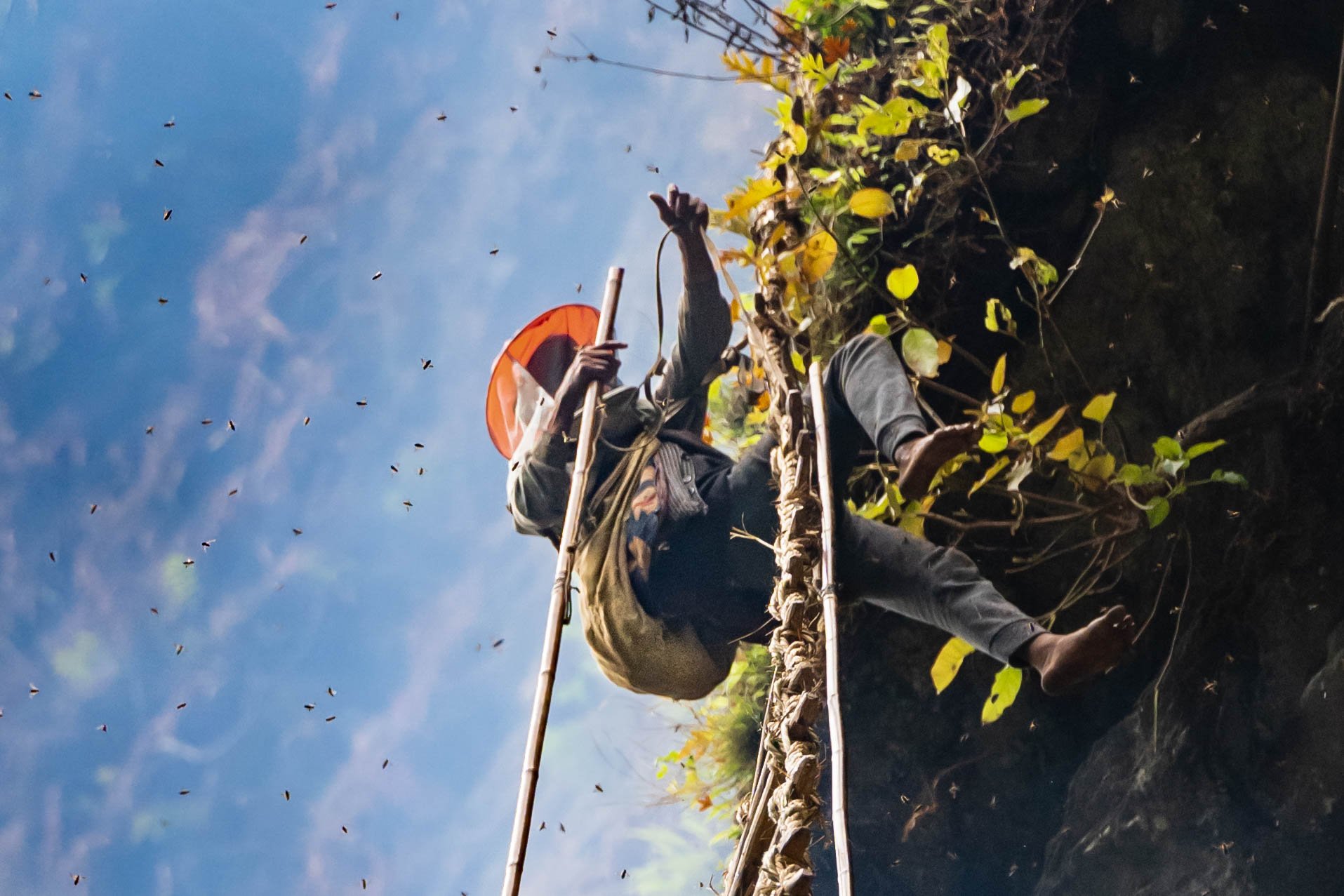
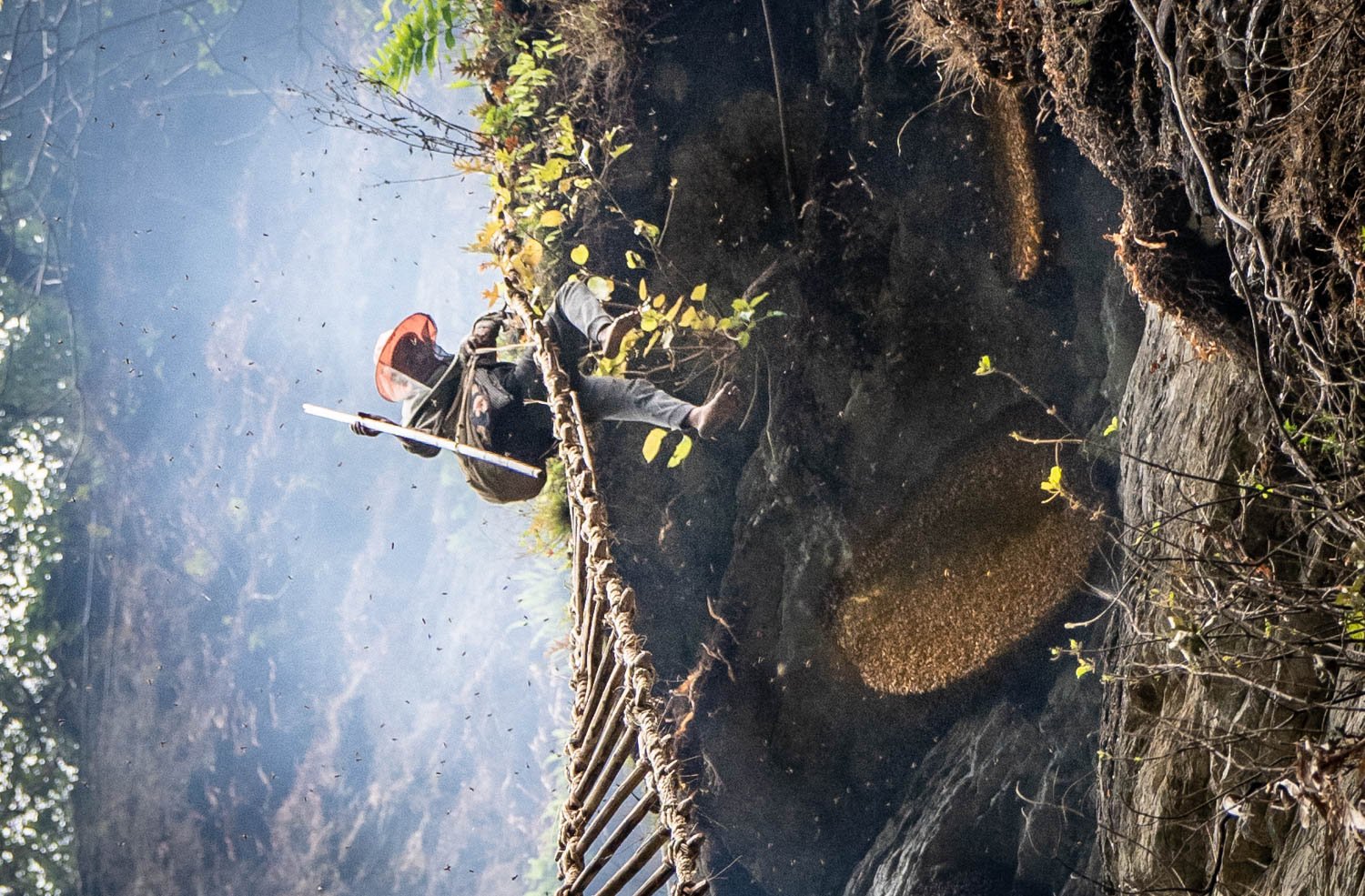
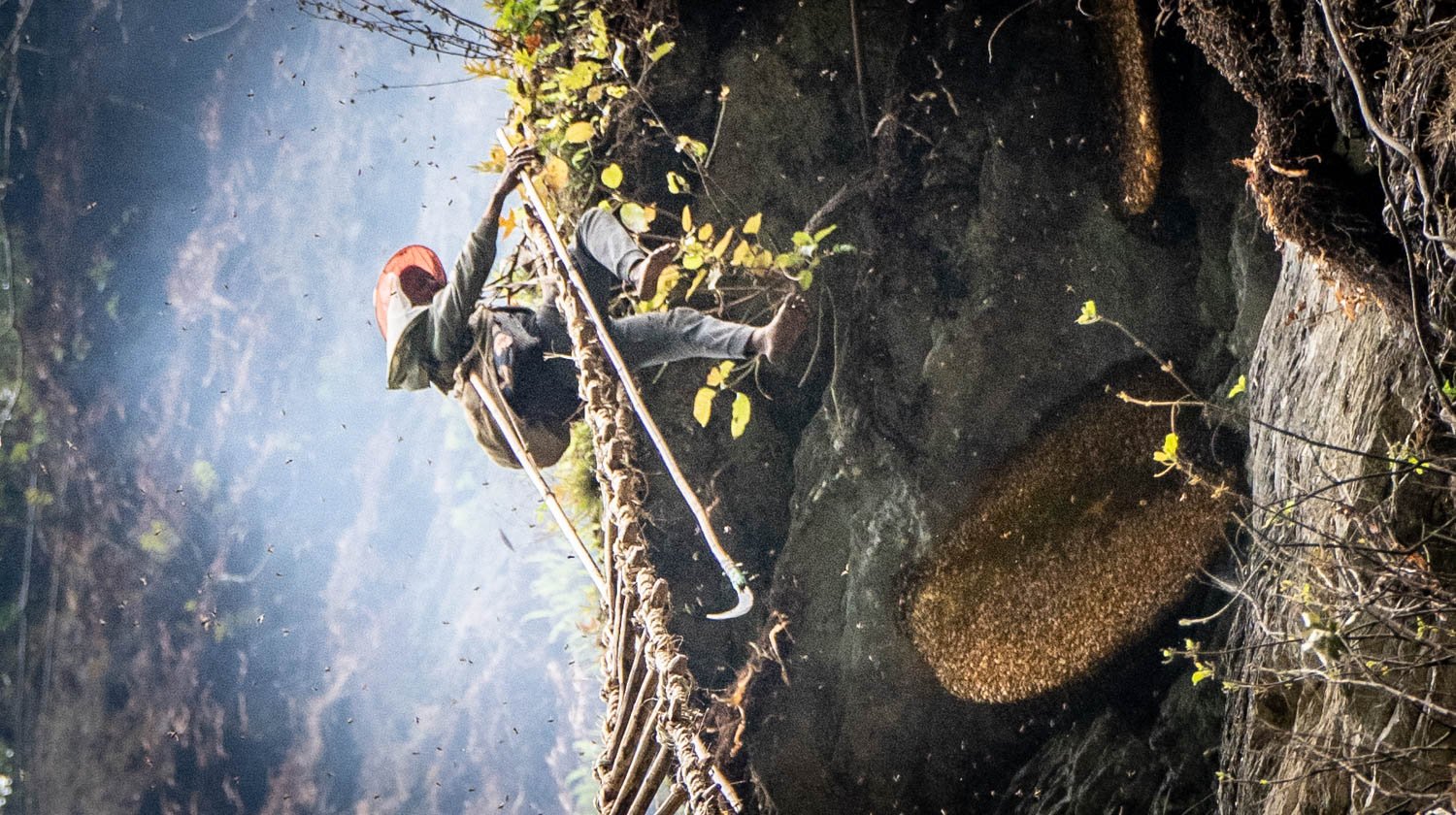
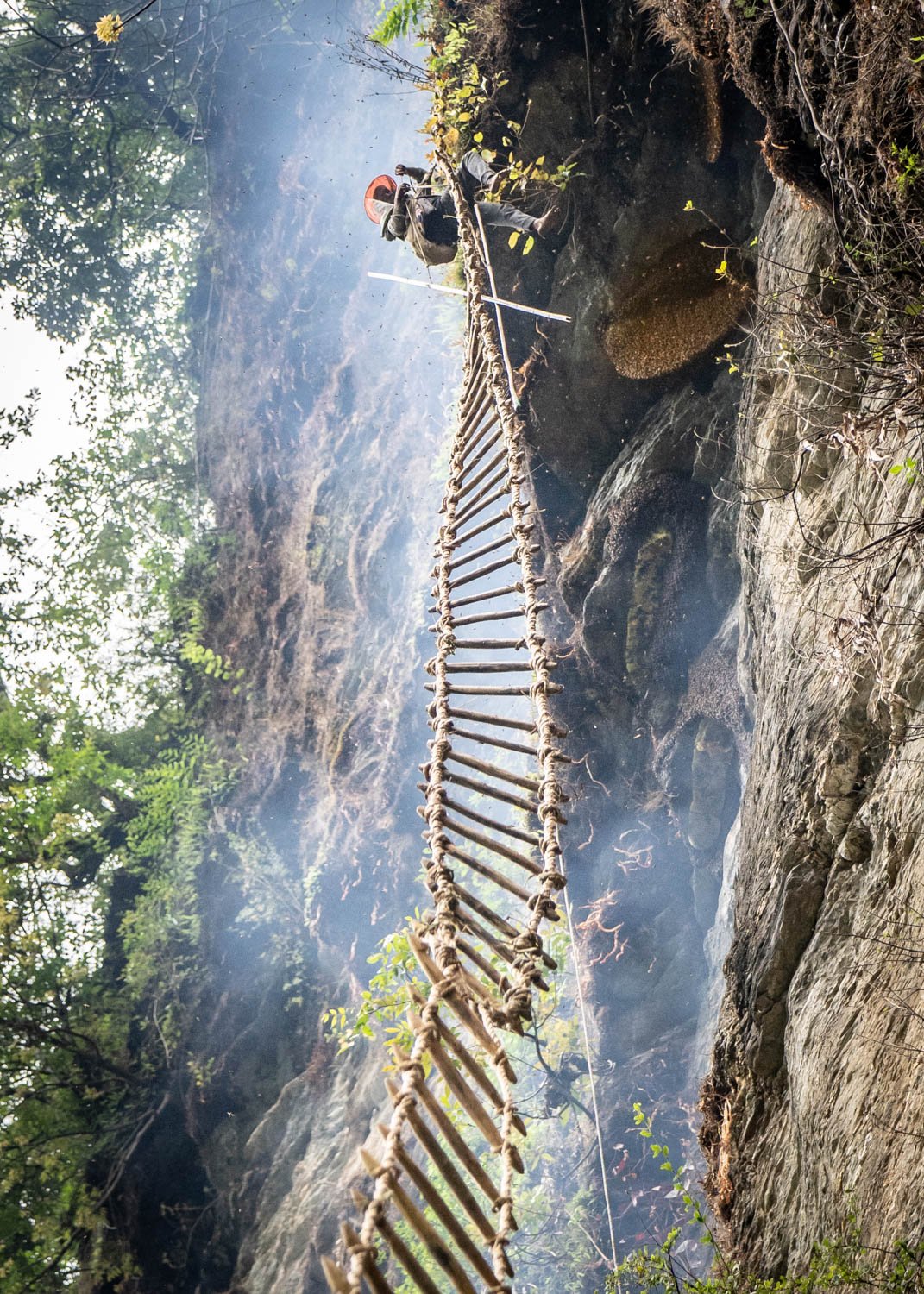

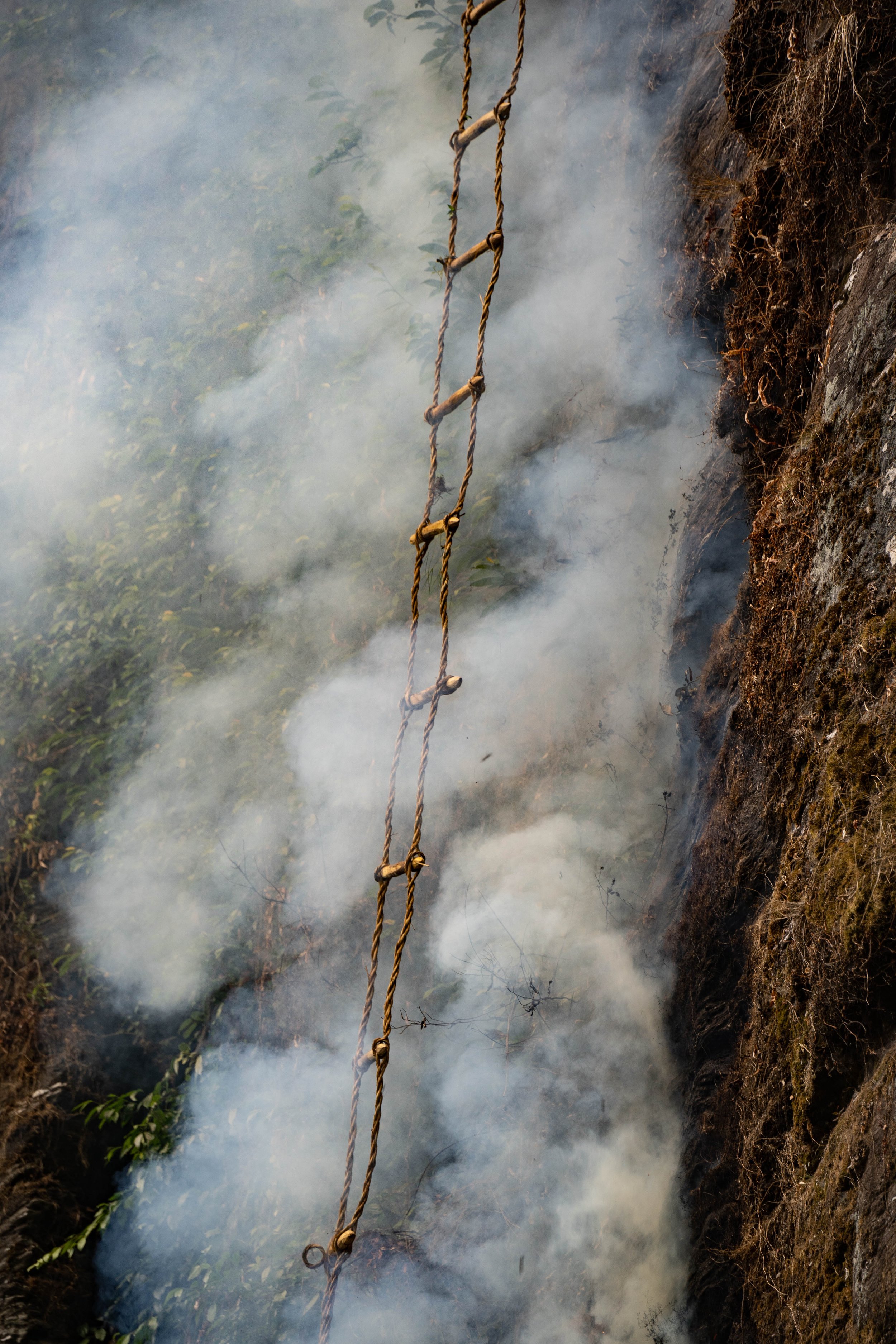
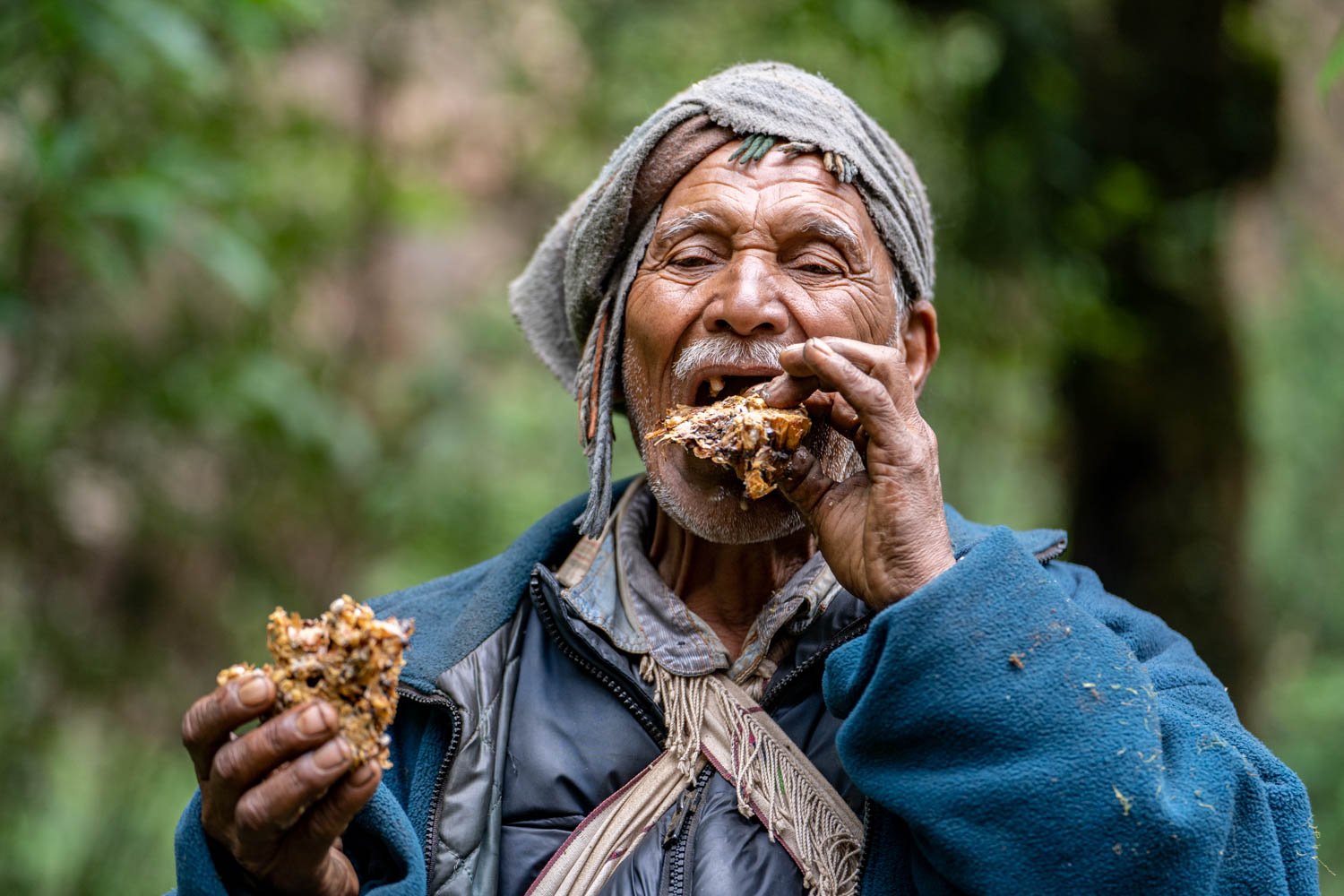
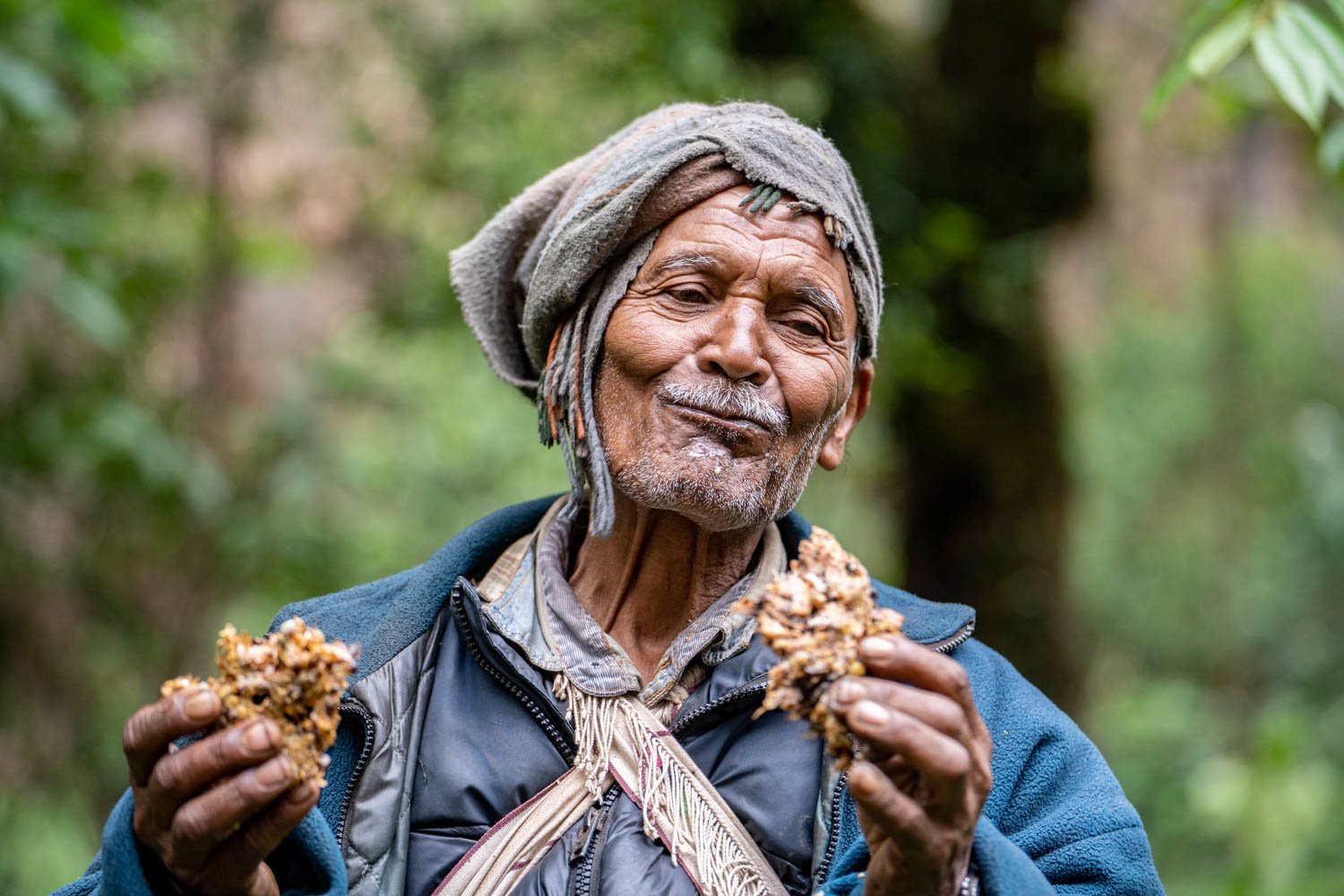
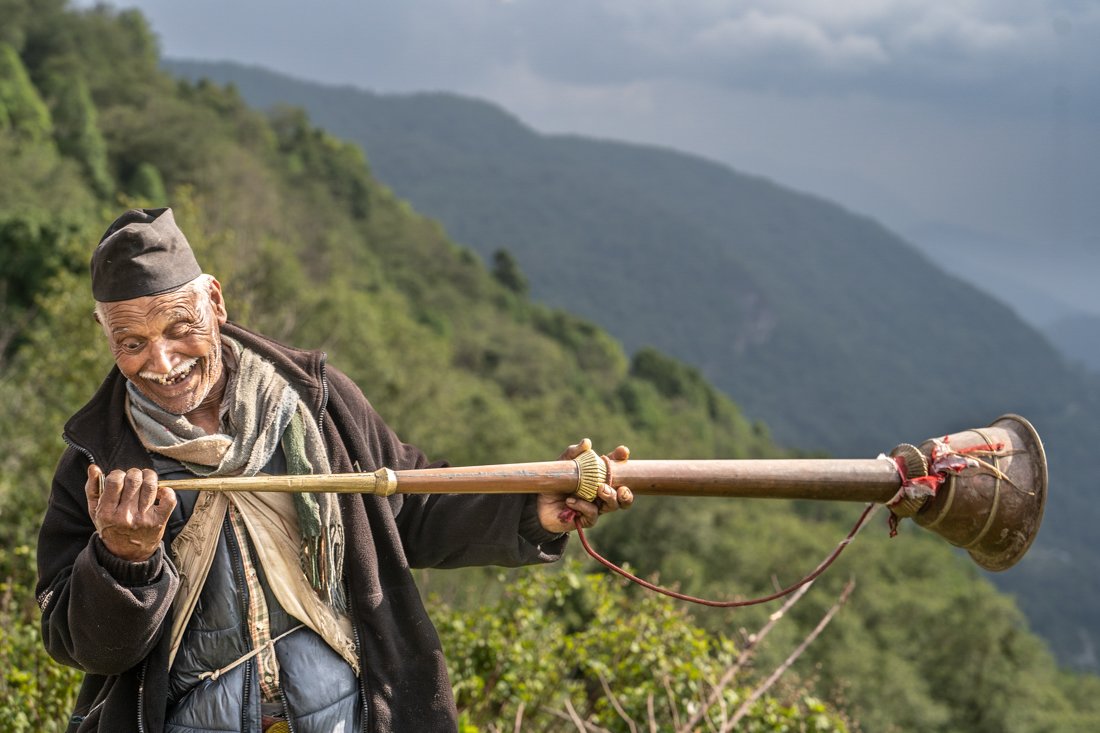

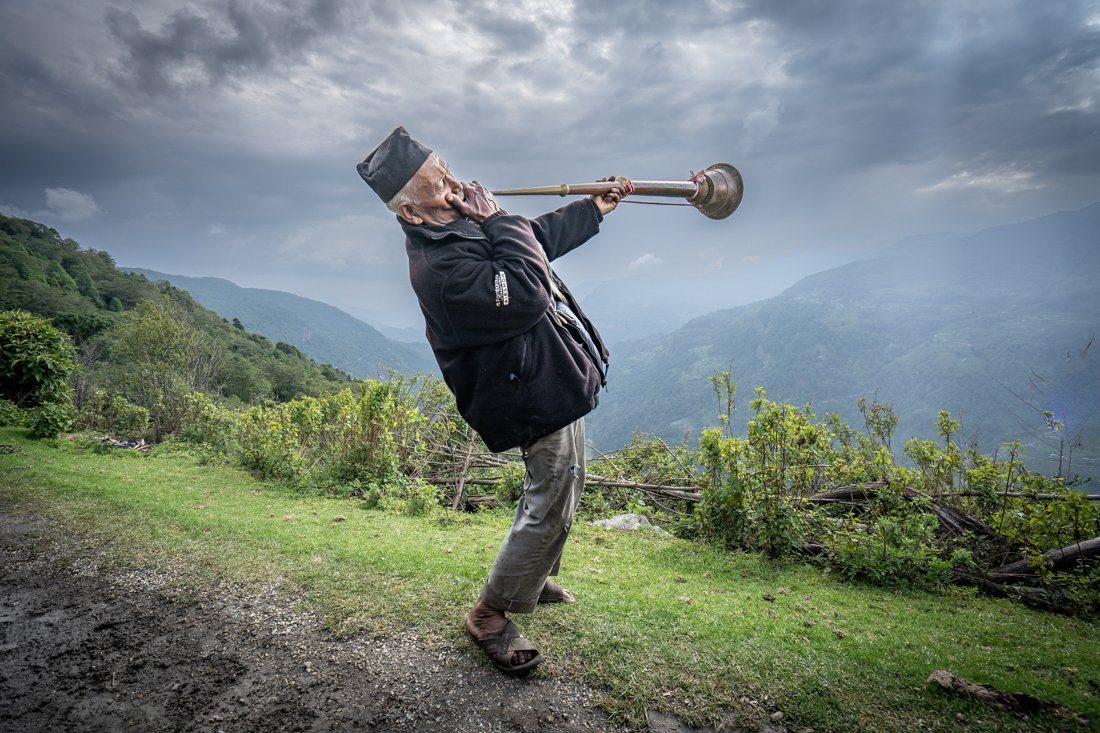
At the age of 50, I received a gift of life - I fell in love with the world of photography.
My specialization in psychic life as a “Lacanian psychoanalyst” and the study of my cultures as a world tour guide, as experiences over the years as two parallel lifelines that often contradicted each other. Travelling around the world forced me to close the clinic for episodes.
And on the other hand, sitting in the clinic without going out into space was inadequate. Photography moved me because in its spaces I finally found an integration to these two loves and pursuits in my life.
The humanistic ethos is at the center of my work. I focus on street photography, documentary photography and cultural photography.
Going out again and again into the unknown and surprised by what was recorded in me through the camera, a process and adventure similar to what happens to me in the clinic together with the patient. I discovered that for me photography is a multi-layered journey between the human psyche and interpersonal relationships, and the study of historical and geographical cultures. I am curious about the story behind the subject and its cultural context and create a connection and closeness with it.
During the corona period and the closures, a project I initiated in photography entered the vacuum. I set up with another partner, a venture that connects cultural research and geography. We created workshops in the Bedouin communities in the Judean Desert, meetings with the Sufis and Circassians in the Galilee and in the Druze villages In the Golan Heights and the Galilee. When the sky reopened, we set out to guide abroad as well, with an emphasis on Southeast Asia.
















